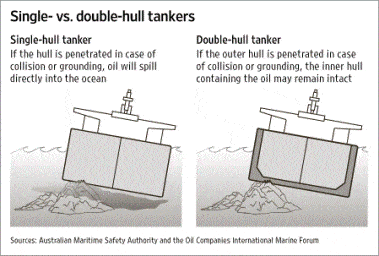

Various BWT systems are available to ensure compliance with the prescribed regulations. Commonly 2 ballast pumps are used, one acts as a filling and the other as a suction pump. Like Flow-through, 3 times the tank volume should pump through the tank. Concurrently, water discharges from the bottom at the same flow rate, maintaining a constant level in the tank throughout the exchange operation. Dilution: Replacement ballast water fills through the top of its tank.Moreover, the water should pump 3 times the volume of each tank to meet the D-1 standard. Water can freely flow through overflow or other arrangements to achieve at least 95% volumetric exchange. Flow-through: Replacement ballast water pumps into the tank.Thus, reducing the chances of having remaining organisms at the bottom of the tanks. Sequential: BW tank is first emptied and then refilled with replacement ballast water to achieve at least a 95% volumetric exchange.This method has become obligatory by the IMO, while the following ways comply with B-4 and D-1 regulations. Ballast Water Management Methods Ballast Water Exchange (BWE)īWE is a process that involves the substitution of water inside the vessel’s ballast tanks. Depending on the different criteria, the shipowner should choose the ideal one.įigure 1.

Ballast Water Management MethodsĬomplying with IMO regulations may come by various management methods. In general treatment systems that comply with the standard have to get approval from IMO. Note that such a system shall meet the performance standard defined in Regulation D-2.ĭ-2 standard specifies the maximum amount of viable organisms applicable to discharge, including specified indicator microbes harmful to human health.Ĭompliance with D-2 seems to be achievable only by the use of a BW treatment system or port management system.

Regulation B-3 requires vessels to perform BW management using a type-approved treatment system. This is due to the different temperatures, salinity, and chemical composition of open seas. Organisms and pathogens contained in ballast water taken on board from coastal waters will not survive if discharged into deep oceans or open seas. The D-1 regulation is based on a simple principle. Regulations B-4 and D-1 establish a standard for BW exchange to minimize the spread of invasive species. It is effective as a voluntary measure in certain regions since 2009. At least 200NM from the nearest land and in waters at least 200m in depth. Regulation B-4 stipulates that vessels performing ballast water exchange should do so in the open ocean. So what are the regulations? Regulation B-4 and D-1 On 8 September 2017, the convention entered into force. The International Convention for the Control and Management of Ships’ Ballast Water and Sediments. Therefore, to combat the problem of invasive species from ballast water, the IMO adopted measures in 2004. These “non-native species” can have a serious ecological, economic and public health impact on the receiving environment. If taken up in one place and released in another, some organisms may survive and prosper in their new environment. Its scope is to increase the draught, change the trim, and regulate the stability or to maintain the stress load within acceptable limits.īut why bother with ballast? Environmental Concernsīallast water (BW) contains a variety of invasive aquatic species such as marine and coastal plants from different regions of the world. Definitionīallast is any additional solid or liquid onboard a vessel. Hence, affecting the manoeuvrability and stability of the vessel. However, when the vessel discharges the cargo, the draft will increase. Note that a specific draught comes with each ship and its loading conditions. ConceptĪ ships main purpose is to carry a multitude of cargo and transport it from port A to B. Why? How it works? Types available, Pros & Cons. This is everything you need to know to get up to speed with Ballast Water Treatment Systems (BWTS).


 0 kommentar(er)
0 kommentar(er)
